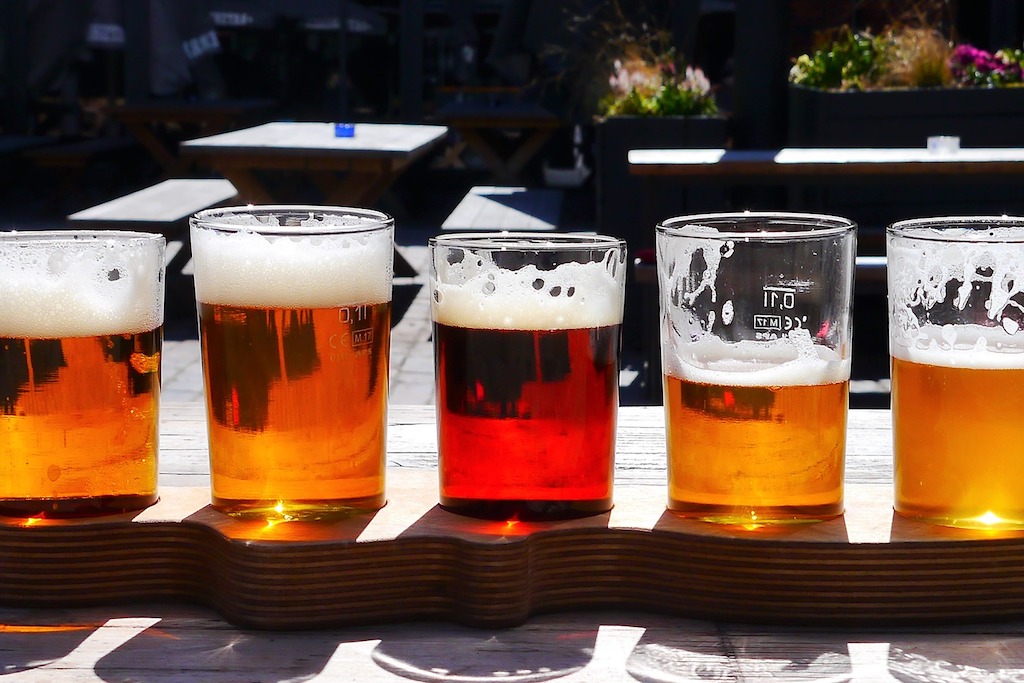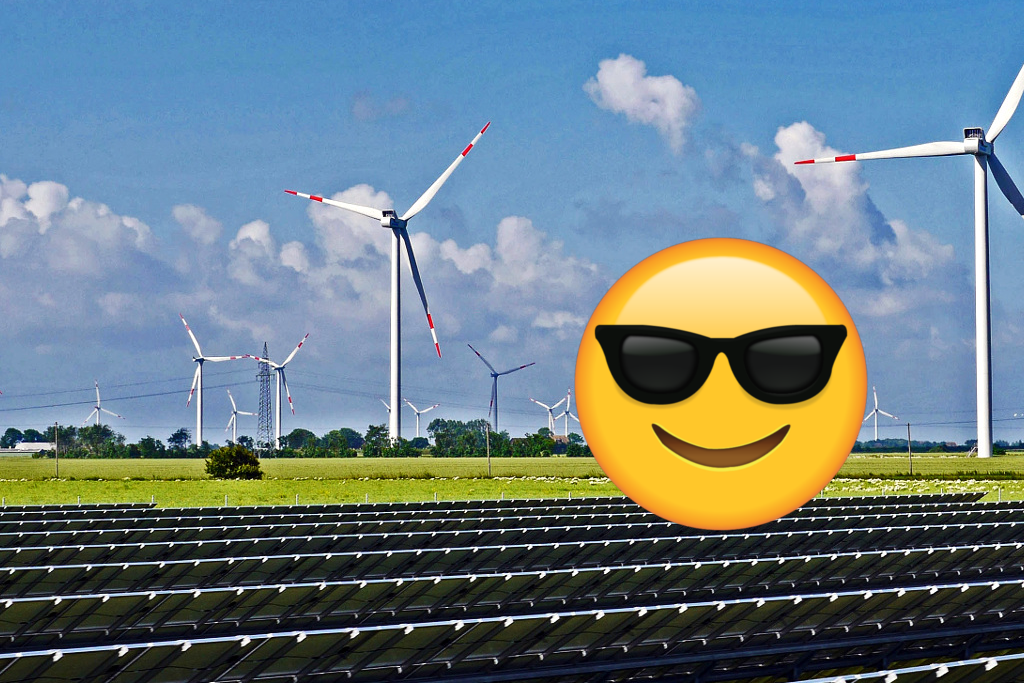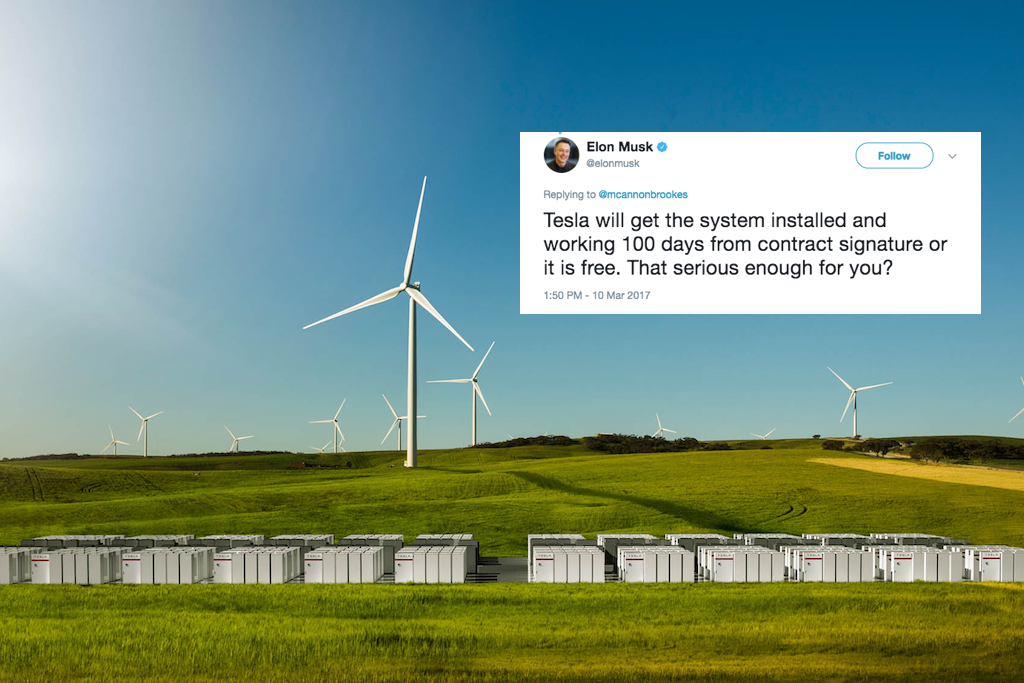How Beer Is Leading The Way For Australia’s Sustainable Future (Yes, Really)
The government may be a decade or two behind the curve, but one of our greatest industries is picking up the slack.

Renewables! They are great. They’re already the cheapest source of new power generation, the growth of battery storage effectively solves any reliability concerns, and — despite what fractured and terrified governments might do to try to stem the tide — they are increasingly popular.
The Australian government may be a decade or two behind the curve, but one of our greatest industries is picking up the slack: beer, and other beer-like substances! So come, friend, and let’s talk about how grog is going green.
Renewably-Powered Beer
To put it bluntly: breweries are fucking killing it in the conservation space right now. Heineken opened the world’s first large-scale zero-carbon brewery in Austria last year, Australian maker Broo is set to open a supermassive one of its own in Ballarat next year, and the world’s largest beer maker, Anheuser-Busch InBev, has announced that it’s moving all breweries onto 100 percent renewable purchased energy by 2025.
For Australians, this means your VBs will soon be a little more green, and CUB could finally have a social action to be proud of after that whole ‘firing workers then trying to rehire them at a fraction of the cost’ thing.
Broo’s plans for the “world’s most environmentally friendly” brewery will incorporate a mix of solar, wind and biogas, powered by spent grain husks used during the brewing process. An underground aquifer will also incorporate water conservation technology. In short, that means they’ll use just 0.5 litres of water in lieu of the industry-standard five litres needed to produce one litre of beer. Good stuff!
On top of the brewery, the site will include a restaurant, visitor centre, wetlands, amphitheater and museum chronicling the history of beer in Australia. And honestly, based on the artist’s rendering, it looks bloody magnificent.
Excited to announce dBA will be working on a new world class, state-of-the-art brewery in Ballarat! #ballarat @broobeer @ozbrewsnews pic.twitter.com/phkHMq1FfZ
— Decibel Architecture (@decibelarch) August 3, 2017
Brewers like Sierra Nevada are already incorporating heat recovery, water conservation and renewable power. At their Californian site, the company generates 95 percent of their electricity from a combination of rooftop solar, Tesla battery system and natural-gas powered capstone microturbines. (While the latter may not be a renewable source, it does provide the dispatchable, flexible energy needed to take full advantage of solar during the day).
They are also incorporating another increasingly common sustainable brewing technology: carbon dioxide recovery. Any CO2 released during fermentation is captured and reused during the carbonisation process. The process can be applied to all beers except pale ale, which has to finish fermenting inside the bottle.
The system offers the dual benefit of both limiting emissions and eliminating the need to purchase CO2. Head of Sustainability at Sierra Nevada Cheri Chastain says that “a brewery our size — we’d be going through about a truckload of carbon dioxide everyday”.
Closer to home, South Australian gas-powered Torrens Island Power Station uses similar technology to recover foodgrade CO2, which is then concentrated, purified, liquefied, pumped into trucks and delivered to food processing and manufacturing sites around the state. While still a positive example of recycling, carbon capture is notoriously inefficient; the system is expected to only capture 50,000 tonnes of the plant’s 1.5 million annual load, which is obviously not a long-term solution even before you get into transport emissions.
Small brewers like Hop Nation in Melbourne and Young Henrys in Sydney incorporate onsite solar while also focusing on water, heat, grains and kegs recycling systems. Newer companies like Good Brew Co also require producers to use solar technology to preheat all water required for the brewing process, and extend their ecological focus to distribution by sourcing and redistributing grains from local breweries.
All of which is to say that, all the way from industrial heavyweights to edgy pinko lefty innovative startups, breweries are ramping up sustainable practices across almost every facet of the beer-making process.
Why? And How
While much of the transition to sustainable brewing can be attributed to public relations and/or genuine environmental concerns, the dwindling price of renewables and the instability of electricity markets means these kinds of investments are, once again, simply the smartest economic option!

As even the most advanced countries are yet to crack 100 percent renewable grids, breweries are hitting their sustainable targets through either a) on-site generation (usually solar, wind, biogas and/or battery storage), or b) power purchase agreements with renewable generators. This follows trends from corporate giants like Apple, Google and Amazon going 100 percent green too. Australian businesses, sadly, are lagging behind, with less than half actively procuring renewable energy and even then only 10 percent or less of their total energy use.
Citing the ever increasing cost of gas prices, Climate Council renewable scientists Petra Stock argues that the companies getting on board are protecting themselves against future price rises.
“By investing in renewables, whether it be large-scale solar plants or a mix of wind and solar and storage, the companies are not only benefiting from how cheap you can now get solar and wind power, but also protecting themselves against price rises down the tracks.”
This is particularly true for Sierra Nevada, which is coming out ahead even after you factor in some big utility charges…
What This All Means
As much fun as renewable-powered beer is on its own, the growth of sustainable breweries points to two broader, arguably more important issues relating to sustainable business practices: energy companies finding new forms of recouping lost revenue; and outdated infrastructure forcing private businesses to distribute energy on grids not designed for two-way power flows.
For Sierra Nevada, their onsite generation means facing some costs: simple demand charges, as well as a net metering cap. Anyone generating more than one MW of their own power has to pay a charge to upgrade state infrastructure to manage it.
Chastain says Sierra Nevada is paying SoCal $20,000/month to generate and use their own onsite electricity, and $150,000 to upgrade the utility’s infrastructure to prevent that power from going back onto the grid. She says that Southern California’s “argument is that they’ve bought power for us already, and by us departing somebody has to pay for that.”
“Now I think that that’s a crazy argument because if we picked up our brewery, said ‘you know what? We’re not going to brew in California,’ and we move all our operations out of state, we don’t pay a departing load.”
Businesses want security to know people will be using renewables in 25 years. The Australian government isn’t making this easy.
Australians face similar challenges with the way utilities handle this transition to renewables, and one of the most prominent is ‘grid defection’. Basically, our otherwise-terrific uptake of rooftop solar can shift the cost of whatever people are saving onto other, generally poorer households. Obviously people shouldn’t have to choose between generating clean energy and not screwing over their disadvantaged neighbours, which means our government need to pull their goddamn heads out and adopt the solution: cost-reflective pricing.
And while brewers, individuals and even isolated communities that are generating their own power (or have gone off-grid entirely) are doing well, a 100 percent renewable Australia will require a simply massive grid overhaul. One conservative scenario, developed with University of Newcastle sustainability tutor Bonnie McBain in 2016, estimated that the grid would have to grow by 250 percent, and include new cross-continental linkages between previously-isolated networks in Western Australia and the Northern Territory, if we are going to manage more distributed, 100 percent renewable supply.
Stock agrees that greater interconnection between states will be essential, but lists other solutions such as battery storage and microgrids (which are seeing a massive uptake in California). It’s likely we will need a combination of all these as we transition.
“Basically the more you can spread out your renewable energy sources, the more secure the whole system becomes,” Stock says. “Because you can have wind blowing in one part of the country at times when it might be lower in other parts of Australia.”
“The transmission companies have been piloting some different approaches, there’s definitely been some transmission companies that have been trialing things like microgrids, trialing smaller scale batteries, and some grid-scale batteries, but we haven’t really seen that to the same extent as what’s happening in California yet.”
The other major challenge is lack of investment security. If you’re going to make a long-term solar, wind or battery investment, you want security to know people will be using it in 25 years. The Australian government isn’t making this easy.
“Companies that operate in different parts of the electricity system, they’re all ready to get on with the transmission, but there’s still that roadblock of needing stable, consistent policy to allow them to make investment into the future,” Stock says. “There’s preparedness to move, they just need the right signals to invest.”
The point? This is going to be a massive transition, and challenges are naturally to be expected, but a few things are clear. Utilities need to adapt to (not get in the way of) this transition. Businesses need some goddamn policy security if they are going to invest. Also, people really want their goddamn sustainable booze.
–
The writer travelled to California with the Climate Council Australia.
–
Chris Woods is a Melbourne-based freelance journalist.


